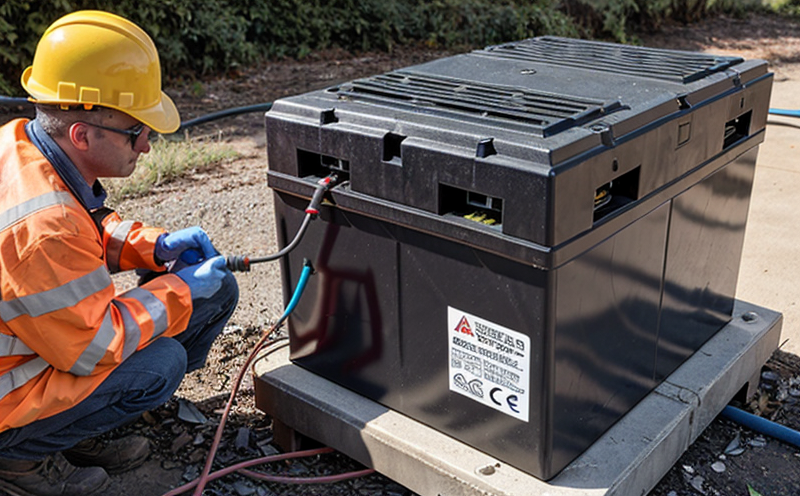IEEE 450 Maintenance and Testing of Vented Lead-Acid Batteries
The IEEE Standard 450 provides a comprehensive framework for the maintenance and testing of vented lead-acid batteries. This standard ensures that batteries are thoroughly evaluated to meet quality, safety, and operational requirements in various sectors such as telecommunications, transportation, and energy storage.
Testing per IEEE 450 involves a series of procedures designed to identify any potential issues early in the battery's lifecycle. The process begins with a visual inspection followed by electrical tests that measure key parameters like open-circuit voltage (OCV), internal resistance, and specific gravity using hydrometer or refractometer.
One critical aspect is the load test where batteries are subjected to a controlled discharge rate to assess their capacity and performance. This helps in determining whether the battery can meet the required specifications over its intended service life. Additionally, there’s a charge acceptance test which evaluates how quickly the battery can be recharged after full discharge.
The testing protocol also includes safety checks such as checking for leaks or corrosion at the vent caps and ensuring that connections are secure without any signs of oxidation. These tests ensure not only the immediate operational readiness but also long-term reliability by identifying early signs of degradation.
For batteries used in critical applications, periodic testing is essential to maintain system integrity. Compliance with IEEE 450 ensures that these batteries perform reliably under all conditions, contributing significantly to overall safety and efficiency.
- Visual Inspection: Ensures no visible signs of damage or corrosion.
- Electrical Testing: Measures OCV, internal resistance, and specific gravity.
- Loading Test: Evaluates battery capacity under controlled discharge conditions.
- Charge Acceptance Test: Checks the rate at which a discharged battery can be recharged.
The standards outlined in IEEE 450 are crucial for ensuring that vented lead-acid batteries meet stringent quality and reliability criteria. By adhering to these guidelines, organizations can enhance safety while optimizing performance across diverse industries.
Industry Applications
The IEEE 450 testing procedure is widely applicable in several sectors where reliable power sources are critical:
- Telecommunications: Ensures that backup batteries provide uninterrupted service during power outages.
- Transportation: Guarantees that vehicle starter and auxiliary batteries function optimally, enhancing safety and efficiency.
- Energy Storage: Helps in validating the performance of batteries used for renewable energy systems.
In each application area, the maintenance and testing procedures outlined in IEEE 450 play a vital role. They help ensure that batteries are not only capable but also safe to use, thereby reducing downtime and enhancing operational reliability.
Eurolab Advantages
At Eurolab, we offer comprehensive testing services tailored specifically to meet the requirements of IEEE 450. Our facilities house state-of-the-art equipment capable of conducting rigorous tests according to this standard:
- Expertise: Our team comprises highly skilled engineers specializing in battery technology.
- Accreditation: We maintain ISO/IEC 17025 accreditation, ensuring the highest standards of testing and calibration.
- Comprehensive Services: From initial inspections to periodic maintenance checks, our services cover all aspects of IEEE 450 compliance.
We also provide detailed reports that offer insights into battery performance and potential areas for improvement. This not only aids in meeting regulatory requirements but also supports continuous improvement within your organization.





